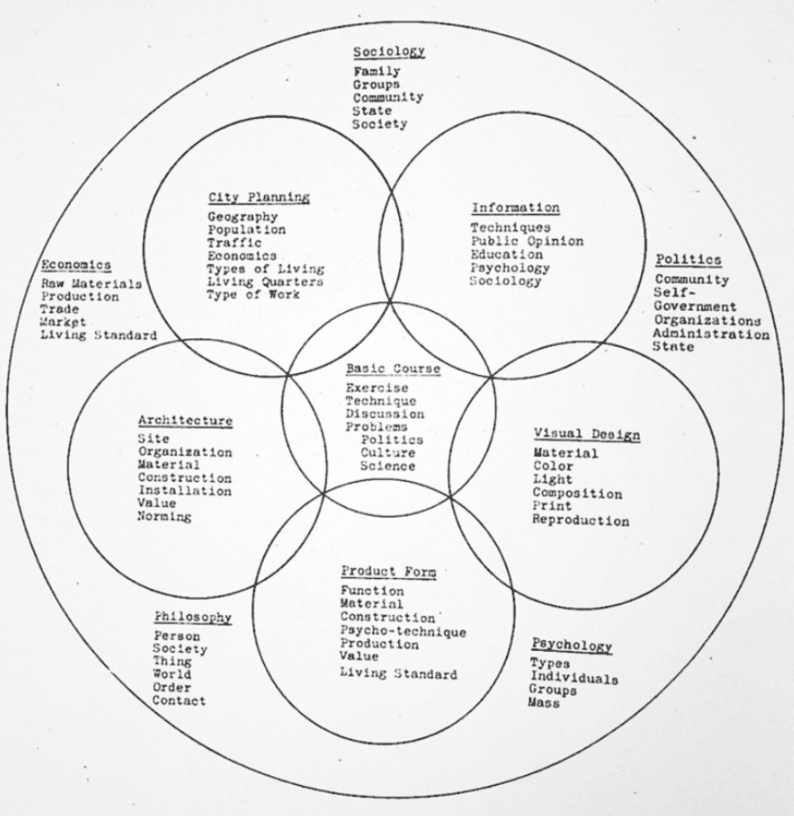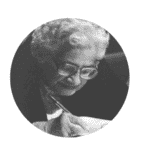Germany’s 2nd “BAUHAUS”: Otl Aicher and the Ulm School of Design

Celebrating the Iconic Brand Design by Otl Aicher: 50 Years Olympic Summer Games Munich 1972
This article is part of something bigger – i.e., our “design trendwatch whitepaper” celebrating the iconic brand design German designer Otl Aicher and his team developed and filled with life. Would you have guessed a story about design would include the story of positive change, of evil roots providing the soil to silently but effectively build something new? We were also as surprised as hooked – and we’re happy to share these timeless insights as inspiration for using great brand design as a way to build the future. Get to know more about it and maybe join us in that endeavor!
After the Bauhaus, the Ulm School of Design is considered the most influential German design school.
It was formerly a community college founded by Inge Scholl, Otl Aicher, and Max Bill in 1946 and evolved into an industrial design school.
Max Bill was also responsible for the architecture of the school building. He was a former Bauhaus student and applied the Bauhaus philosophy to his design for the buildings: functionally sober with a workshop atmosphere, removing any sign of opulence.
What’s important to mention is that due to the social and political circumstances and the personal background of its founders (see before), in this post-war period, the school’s foundation was based on a set of principles of:
- being socially responsible
- making a contribution to a “new democratic education”
- the reconstruction of German social life.
“The vision for the Ulm School was to train a class of socially-minded designers who used modernist principles to build a new worldview — one that wasn’t necessarily tied to commerce, but to democracy.”
Quoted from: https://www.artsy.net/article/artsy-editorial-bauhaus-lesser-known-ulm-school-seismic-impact-design
Though this might sound contrary to the traditional idea of designing for consumer brands by 1958 the students worked directly with corporations like Herman Miller, Lufthansa, IBM, and Braun.
The school’s main job was to solve modern industrial society’s design problems in industrial production and communication.
The Argentinian designer and Ulm School rector Tomás Maldonado contributed to the “Ulm Model“. He oriented design education towards system design thinking, mixing science and design.
This is the same philosophy behind the IKEA products, it was the view into the future of the mass industry for designed products.
Early 1960’s, the school introduced the Ulm Model: “a novel form of design pedagogy that combined formal, theoretical and practical instruction with work in so-called ‘Development Groups’ for industrial clients under the direction of lecturers.”
Become an insider
The artist-designer couldn’t stay outside of the production process because of the new and complex requirements:
“You had to be absolutely within the process, and there had to be a team of disciplinary specialists — not only of material but circulation and consumption, which was also partly sociological. It was a different way of thinking about form and its relation to product.” – Peter Kapos

“The result is the Ulm Model: a model of design supported by technology and science. The designer is no longer a lofty artist but an equal partner in the decision-making process of industrial production.” – Otl Aicher
The school clearly had a strong Bauhaus influence, and its faculty included former Bauhaus instructors such as Josef Albers, Johannes Itten, Walter Peterhans, and Helene Nonné-Schmidt (a Bauhaus graduate).
The school went through a series of problems in its leadership, and even though its main goal was to make the “world rational and complete,” “industrially based and free.”
It lost state funding in 1968 and it was closed.
Its legacy, however, had already put down roots and was about to bloom soon.
Works by Bauhaus instructors Albers, Itten and Peterhans.
Women at the Ulm School of Design
The inclusivity in the Ulm School could be seen in the diversity of its students, the training curriculum attracted pupils from 38 countries, and more than 40% of the students were foreign.
98 out of 642 students were women and came from 19 different countries – this is a very small number compared to other Fine Arts institutions at that time: they were centers that attracted women, and the female student rate was almost 43%.
The Ulm School was committed to democratic education and provided the same equal opportunities for both genders. The only real reason for this extremely low rate would be the teaching contents, which differed from the ones commonly offered in Fine Arts Colleges.
It was more focused on its commitment to an emerging society.
Still, of 216 lecturers of the college, only six were female.
One of the female lecturers that stand out is Helene Nonné-Schmidt; she graduated from the Bauhaus and is the author of “Woman’s Place at the Bauhaus.”

Before working at the Ulm School, her studio was destroyed during a bombing.
Helene worked for a short time for the magazine “Heute” in Munich in 1949. In 1953, Max Bill brought her to the newly founded Ulm School, where she taught “Elementary Theory of Colors and Form“ and “Systematic of Color Theory ”. She was married to another Bauhaus icon, Joost Schmidt.

Helene Nonné-Schmidt
graduated at Bauhaus, (Foundation course)

Dr. Elisabeth Walther
Philosopher/Mathematician, (Information course)

Dr. Käte Hamburger
Dr. of Literature, (Information course)

Dr. Gisela Krammer
Dr. of cultural Studies, (History of Culture)

Monica Wilde
Cutter, (Film)

Beate Mainka-Jellinghaus
Cutter, (Film)
Work by female students during their time at the HfG: Margarete Kögler, Ursula Wenzel, Ingeborg Schwarz, Anne Preiss, Eva Maria Koch
This is Chapter 2 of 6 of our Design Trendwatch special about Otl Aicher and his iconic brand design for the 1972 Olympic Games in Munich – check out the other parts here:
Or, if you’d like to enjoy the full-blown beauty of this nicely layouted whitepaper, be sure to download it here now:




















Leave a Reply